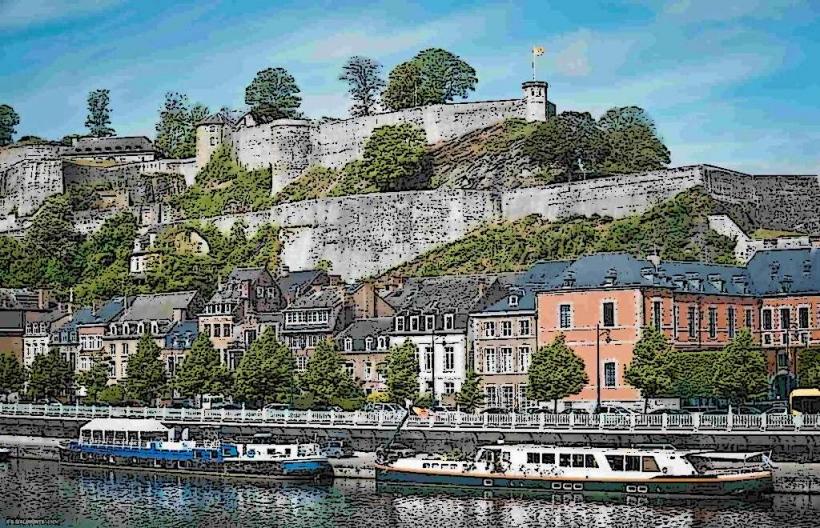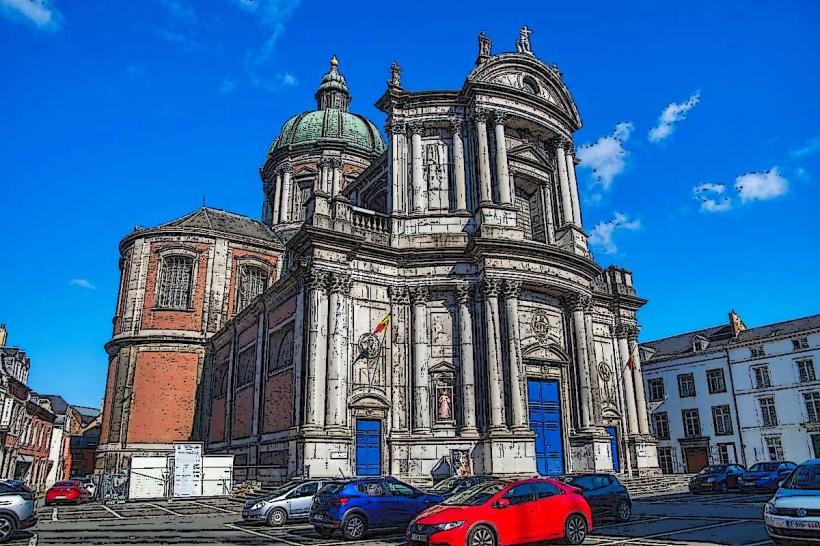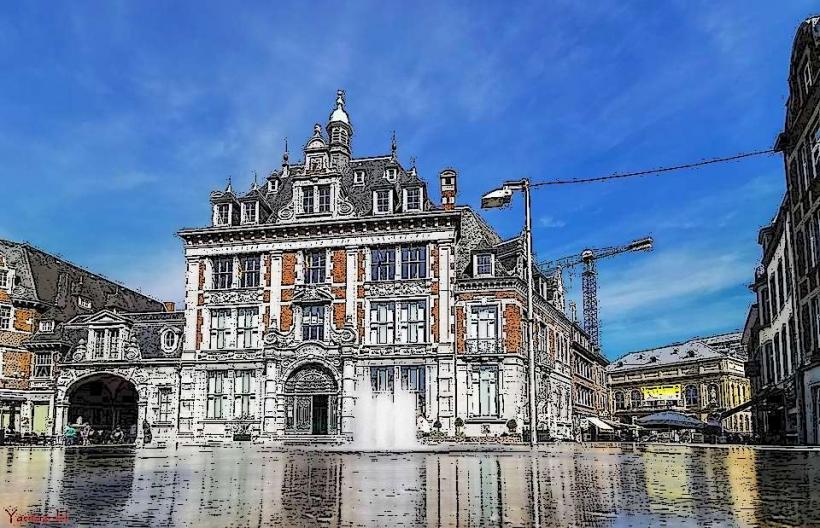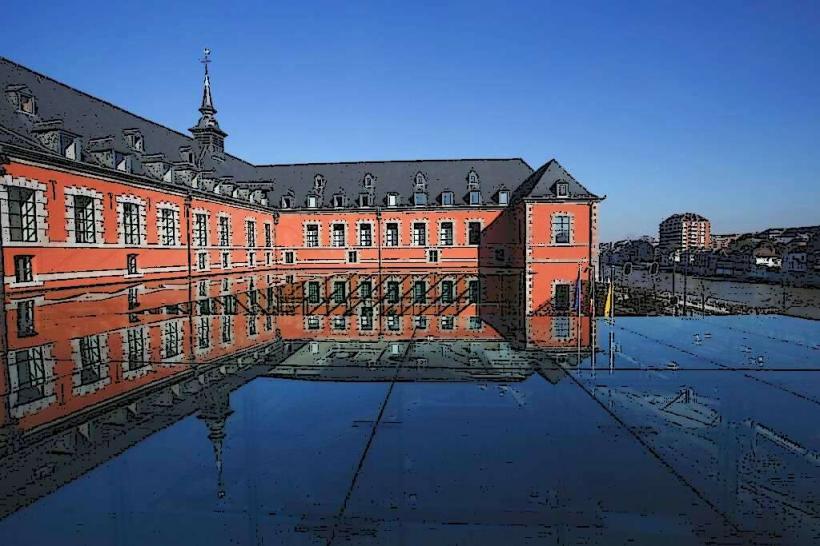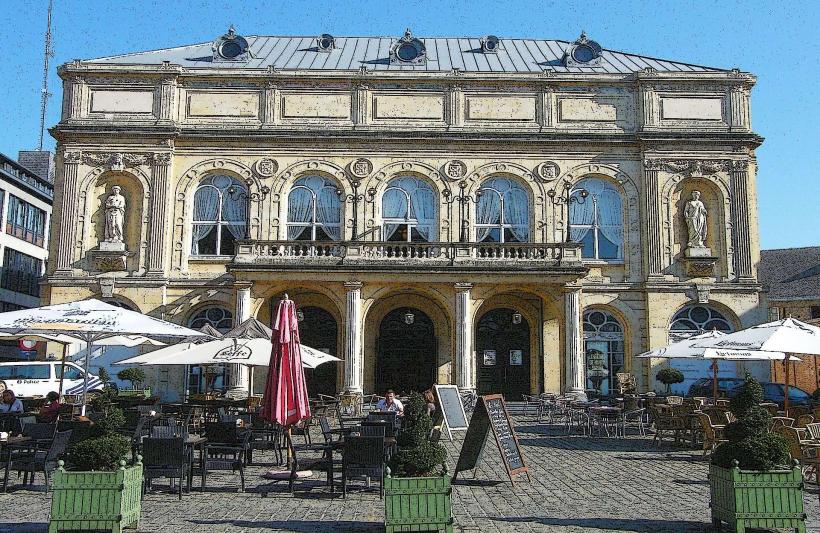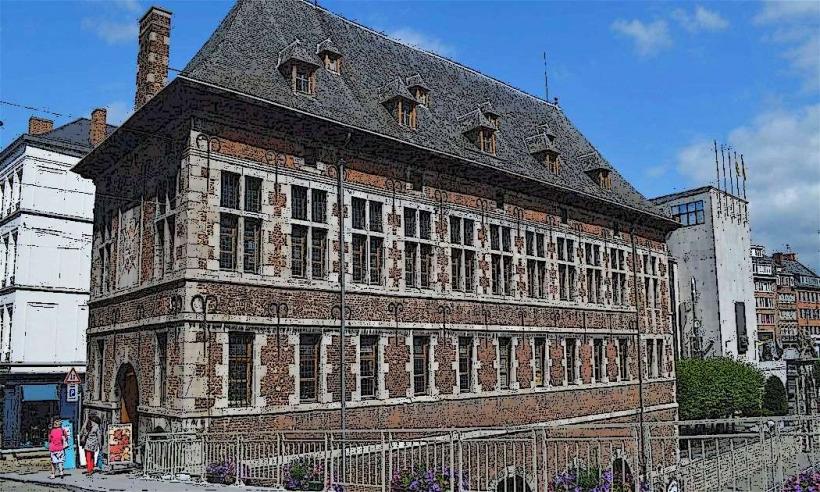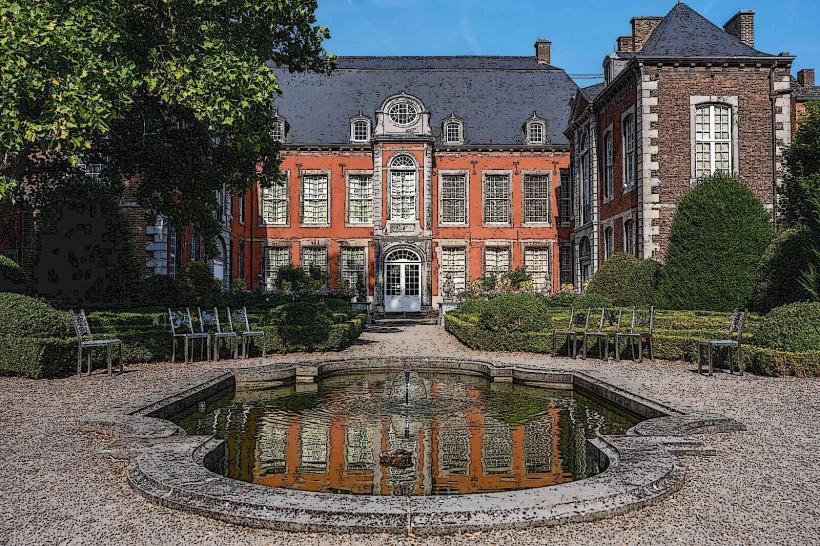Information
Landmark: Sambre RiverCity: Namur
Country: Belgium
Continent: Europe
The Sambre River is a significant waterway in Belgium and France, flowing through the Wallonia region of Belgium and the northern part of France. It is known for its scenic beauty, historical importance, and role in regional transportation. The river flows through a variety of landscapes, from rolling hills and forests to industrial zones, and it has been a vital waterway for centuries.
Geography and Course
Source: The Sambre River originates in the Ardennes mountains in southern Belgium, near the town of Fumay in the French Ardennes. It starts as a small stream before growing into a major river as it progresses southward.
Route: The river flows in a generally southern direction, passing through several towns and cities, including:
- Charleroi (Belgium), an important industrial hub, where the Sambre becomes more pronounced as a major waterway.
- Namur (Belgium), where the Sambre joins with the Meuse River in a confluence that marks an important geographical and historical point.
- The river then continues its journey toward the French border, passing through regions such as Avesnes-sur-Helpe before eventually emptying into the Oise River in France.
Length: The Sambre River stretches over 200 kilometers (about 124 miles), with most of it lying within Belgium. Its course takes it through diverse landscapes, from rural to urbanized regions.
Historical Significance
Strategic Importance: Historically, the Sambre River has played a critical role in the region's development. During the Middle Ages, it was used for trade and transportation, particularly by boats that carried goods such as coal, iron, and other industrial materials. The river also played a role in various military campaigns, as its banks were important defensive positions during conflicts such as World War I and World War II.
Industrial Revolution: The Sambre Valley became an industrial heartland during the 19th century. Cities like Charleroi developed around the river due to its proximity to coal mines and steel mills, becoming a center for Belgium's industrial revolution. The river was integral to the transportation of raw materials and finished goods.
Ecology and Landscape
Natural Beauty: While much of the Sambre's course runs through industrial areas, it also passes through scenic countryside, including wooded hills and agricultural land. The river's surrounding landscape is rich in wildlife, and several nature reserves are located along its banks.
Pollution: Like many rivers in industrial areas, the Sambre has faced challenges with pollution due to its proximity to coal and steel industries. However, efforts have been made in recent years to improve water quality and restore ecological balance in the river's basin.
Bridges and Locks: The Sambre is crossed by several bridges, some of which have historical significance. It is also a navigable waterway, with locks along its course to help manage water levels and facilitate boat traffic.
Cities and Towns Along the Sambre
Charleroi: The largest city on the river, Charleroi, is a major industrial city in southern Belgium. It developed rapidly in the 19th and 20th centuries, primarily due to the river’s accessibility for trade. Charleroi is now known for its post-industrial regeneration, as the city transitions from coal and steel production to a more diversified economy.
Namur: The capital of the Wallonia region of Belgium, Namur sits at the confluence of the Sambre and Meuse rivers. It is known for its citadel, its historical architecture, and its role as a cultural and administrative center. The Sambre River plays a key role in the city's layout, providing a scenic backdrop.
Hanzinelle and Avesnes-sur-Helpe: These smaller towns along the Sambre offer a more rural atmosphere, with charming villages that highlight the contrast between industrial and natural landscapes.
The Sambre in Modern Times
Transportation and Navigation: Today, the river is part of the Belgian and French waterways network. It is still navigable for smaller boats and barges, although it is less used for large-scale industrial transport than it was during the height of the industrial age.
Recreation and Tourism: In modern times, the Sambre has become a popular site for recreational activities. Kayaking, fishing, and cycling along the riverbanks are common activities. The surrounding towns and cities, particularly Charleroi and Namur, offer cultural and historical sites that attract tourists. Efforts to clean up the river and improve its surroundings have contributed to the rise in recreational use of the river.
Environmental Initiatives: In response to past pollution, several environmental initiatives have been launched to restore the Sambre River. These efforts include improving water quality, enhancing biodiversity, and developing green spaces along the river's path.
Conclusion
The Sambre River is a historically significant waterway that has shaped the development of cities and regions along its course, particularly in Belgium and northern France. While it has been a lifeline for trade, transportation, and industry, it is also valued today for its natural beauty and as a hub for recreational activities. As urban areas evolve and environmental concerns are addressed, the river continues to be an important part of the region's heritage and future.

